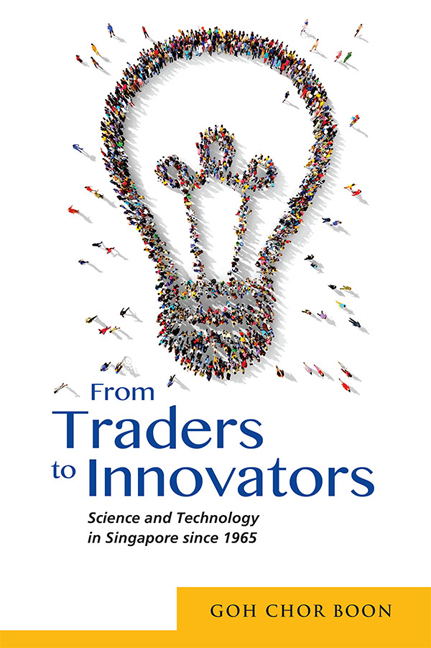Book contents
- Frontmatter
- Contents
- List of Abbreviations
- Introduction
- 1 From Dependency Theory to Creative Innovation
- 2 Surviving and Catching Up in the 1960s and 1970s
- 3 Developing a Technological Growth Trajectory in the 1980s
- 4 State Intervention and Technological Change
- 5 Nurturing a Scientific Culture
- 6 Sociocultural Attributes and R&D
- 7 Towards a Technologically Creative Society
- 8 Conclusion: Power of a Service-Brokerage Culture
- Bibliography
- Index
- About the Author
7 - Towards a Technologically Creative Society
Published online by Cambridge University Press: 19 May 2017
- Frontmatter
- Contents
- List of Abbreviations
- Introduction
- 1 From Dependency Theory to Creative Innovation
- 2 Surviving and Catching Up in the 1960s and 1970s
- 3 Developing a Technological Growth Trajectory in the 1980s
- 4 State Intervention and Technological Change
- 5 Nurturing a Scientific Culture
- 6 Sociocultural Attributes and R&D
- 7 Towards a Technologically Creative Society
- 8 Conclusion: Power of a Service-Brokerage Culture
- Bibliography
- Index
- About the Author
Summary
In 1982, Masanori Moritani of Nomura Research Institute gave a frank assessment of Singapore's ability to develop its own industrial and technological innovations. Based on Japan's successful experience with industrial and technological development, Moritani identified seven cultural traits essential for sustaining high-technology growth. They are diligence, expertise, application ability, quickness and resourcefulness, elaborateness and cleanliness, refinement, and organizing ability. While not doubting that Singaporeans possess the qualities of diligence and quickness and resourcefulness, Moritani had reservations on the remaining five traits, especially the need to develop expertise and organizing ability. Japanese engineers and line workers alike recognized the need to accumulate a high level of knowledge of technology within an enterprise, and thus become “well-informed experts who know in the greatest detail the process of work”. This cannot be said of the workers of Singapore because “many people who after working on a job for one or two years, feel that they have mastered the job and want to move on to another job”.
Moritani himself downplayed the perception that Japan is a country of groupism, which implies concerted action at the orders of a leader who has absolute power. He clarified that, within a group, each member expresses his view frankly and the leader mediates different opinions and forms a consensus. Thus, the traits of self-restraint and the need to conform do not imply passiveness or meekness. On the contrary, they called for the ability to give constructive and creative suggestions and, at the same time, the ability to tolerate individualism and be ready to compromise to the group's final decision. According to Moritani, this harmonization between the whole and individuals, both at the group and organizational levels, is essential for rapid technological development. Perhaps responding to his observation, the Japanese concept of QCCs was introduced by the government into Singapore's industrial scene in an attempt to stimulate ideas through teamwork. In 1982 about 2,000 QCCs were formed, and by 1988 about 56,000 of them had been introduced. Between 1980 and 1989 there were 703 articles and reports on the QCCs in the Straits Times. Particularly in the 1970s and 1980s, Singapore took great pains in learning from her one-time colonial master how to achieve industrial success.
- Type
- Chapter
- Information
- From Traders to InnovatorsScience and Technology in Singapore since 1965, pp. 168 - 195Publisher: ISEAS–Yusof Ishak InstitutePrint publication year: 2016



